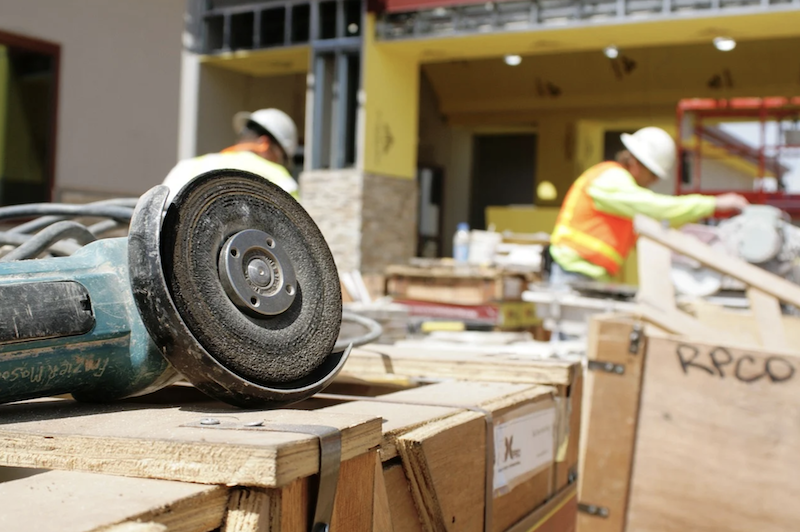Total construction spending ticked up from June to July, as gains in residential and public construction offset a dip in private nonresidential projects, according to a new analysis of federal construction spending data the Associated General Contractors of America released today. Officials noted, however, that challenges remain for the industry, particularly because of continuing problems with coronavirus flare-ups and supply-chain disruptions.
“Although nonresidential construction is no longer in free fall, many categories face continuing challenges,” said Ken Simonson, the association’s chief economist. “The rapid spread of the delta variant of COVID-19 is causing a pullback in re-openings and travel that may lead some owners to postpone new projects. Meanwhile, materials price increases, limited supplies of key materials, and long or uncertain delivery times are impeding the industry’s recovery.”
Construction spending in July totaled $1.57 trillion at a seasonally adjusted annual rate, an increase of 0.3% from June, and 9.0% higher than the pandemic-depressed rate in July 2020. Once again, residential construction saw monthly and year-over-year gains, while nonresidential construction spending posted mixed results. The residential construction segment climbed 0.5% for the month and 26.5% year-over-year. Combined private and public nonresidential construction spending inched up 0.1% compared to June but declined 4.2% compared to July 2020.
Private nonresidential construction spending fell 0.2% from June to July and 3.6% since July 2020. The largest private nonresidential category, power construction, decreased by 0.7% from June to July and 0.9% year-over-year. Among the other large private nonresidential project types, commercial construction—comprising retail, warehouse and farm structures—was essentially unchanged for the second month in a row but higher than in July 2020 by 4.6%. Manufacturing construction spending was also nearly unchanged for the month and up 1.8% from a year earlier. Office construction decreased 0.1% compared to June and 6.1% year-over-year.
Public construction spending increased 0.7% for the month but was 5.1% lower year-over-year. Among the largest segments, highway and street construction gained 1.9% compared to June but dipped 0.1% over 12 months. Public educational construction fell 0.5% in July and 6.4% year-over-year. Spending on transportation facilities was up 0.3% from June but fell 4.2% from July 2020.
Association officials said the spending figures highlight some of the challenges the industry is facing amid a resurgent coronavirus and ongoing supply chain problems. They added that the association will release more details on how demand for new projects and workforce supply are being impacted by the coronavirus during a virtual media event at noon on Thursday, September 2nd with Autodesk.
“We are starting to get a more complete picture of how the resurgent coronavirus and policy responses to it are impacting the construction industry,” said Stephen E. Sandherr, the association’s chief executive officer. “The industry will not be out of the woods without new federal infrastructure investments and support for workforce development.”
Related Stories
Market Data | Jun 3, 2016
JLL report: Retail renovation drives construction growth in 2016
Retail construction projects were up nearly 25% year-over-year, and the industrial and office construction sectors fared well, too. Economic uncertainty looms over everything, however.
Market Data | Jun 2, 2016
ABC: Nonresidential construction spending down in April
Lower building material prices, a sluggish U.S. economy, and hesitation among private developers all factor into the 2.1% drop.
Market Data | May 20, 2016
Report: Urban area population growth slows
Older Millennials are looking to buy homes and move away to more affordable suburbs and exurbs.
Market Data | May 17, 2016
Modest growth for AIA’s Architecture Billings Index in April
The American Institute of Architects reported the April ABI score was 50.6, down from the mark of 51.9 in the previous month. This score still reflects an increase in design services.
Market Data | Apr 29, 2016
ABC: Quarterly GDP growth slowest in two years
Bureau of Economic Analysis data indicates that the U.S. output is barely growing and that nonresidential investment is down.
Market Data | Apr 20, 2016
AIA: Architecture Billings Index ends first quarter on upswing
The multi-family residential sector fared the best. The Midwest was the only U.S. region that didn't see an increase in billings.
Building Technology | Apr 11, 2016
A nascent commercial wireless sensor market is poised to ascend in the next decade
Europe and Asia will propel that growth, according to a new report from Navigant.
Industry Research | Apr 7, 2016
CBRE provides latest insight into healthcare real estate investors’ strategies
Survey respondents are targeting smaller acquisitions, at a time when market cap rates are narrowing for different product types.
Market Data | Apr 4, 2016
ABC: Nonresidential spending slip in February no cause for alarm
Spending in the nonresidential sector totaled $690.3 billion on a seasonally adjusted, annualized basis in February. The figure is a step back but still significantly higher than one year ago.
Market Data | Mar 30, 2016
10 trends for commercial real estate: JLL report
The report looks at global threats and opportunities, and how CRE firms are managing their expectations for growth.

















